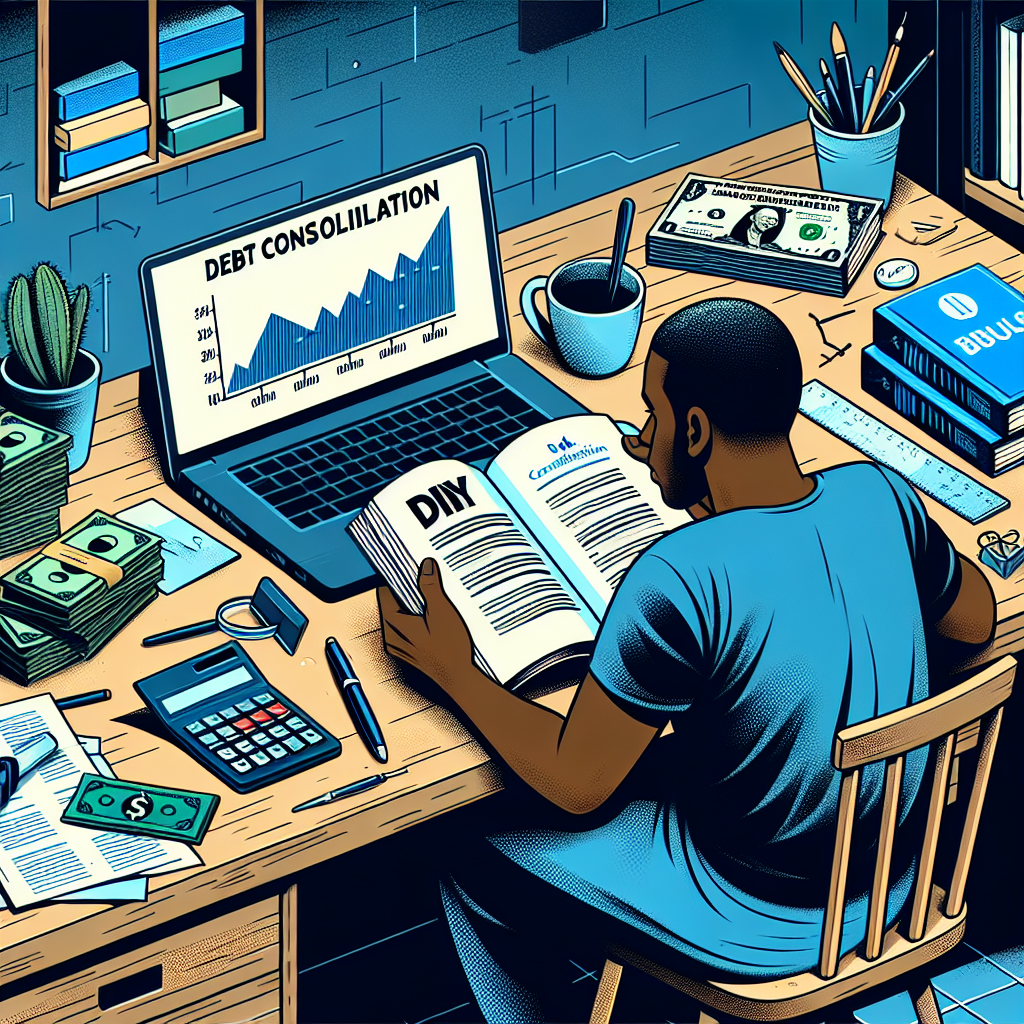In today’s fast-paced financial landscape, many individuals face the burden of multiple debts, ranging from credit cards to personal loans. As interest rates rise, consolidating these debts into a single payment can be an effective solution. But can you take the DIY (Do-It-Yourself) approach to debt consolidation? In this article, we will explore the feasibility of handling debt consolidation yourself, the steps involved, potential benefits, drawbacks, and when to seek professional help.
Understanding Debt Consolidation
Debt consolidation is the process of merging multiple debts into a single loan or payment plan. This can often lead to lower monthly payments and reduced interest rates. There are various methods for debt consolidation, including personal loans, balance transfer credit cards, or even home equity loans. However, many individuals consider a DIY approach to save on fees and regain control over their finances.
The DIY Debt Consolidation Process
1. Assess Your Financial Situation
Before diving into consolidation, take a thorough look at your current financial situation. Gather all your debts, including the amounts owed, interest rates, and monthly payments. A comprehensive overview will help you determine which debts to consolidate and how much you need.
2. Create a Budget
Developing a realistic budget is crucial in managing your finances effectively. Calculate your income versus your expenses to identify how much you can allocate towards debt repayment each month. This will inform your DIY strategy, whether you choose to consolidate or pay off debts individually.
3. Research Your Options
There are several ways to consolidate debt on your own:
-
Balance Transfer Credit Cards: These cards allow you to transfer high-interest debt to a card with a lower rate, often offering an introductory period with 0% APR.
-
Personal Loans: A personal loan can be an effective way to consolidate debt at a lower interest rate. Lenders provide various options, so it’s essential to shop around for the best rates.
- Home Equity Loans or Lines of Credit: If you own a home, leveraging your home’s equity can allow for debt consolidation at lower rates. However, this option carries significant risk.
4. Negotiate with Creditors
Once you have a solid understanding of your debts and options, consider reaching out to your creditors. Negotiate lower interest rates or ask for a repayment plan that works better for your financial situation. Many creditors are willing to work with you, especially if you express your commitment to paying your debts.
5. Implement a Repayment Strategy
Deciding between methods such as the Debt Snowball (paying off the smallest debts first) or the Debt Avalanche (paying off the debts with the highest interest rates first) can guide your repayment strategy. Focus on consistency and discipline in sticking to your plan.
The Benefits of DIY Debt Consolidation
1. Cost Savings
One of the most significant advantages of a DIY approach is the potential for cost savings. By avoiding fees commonly associated with professional debt consolidation services, you can put more money towards paying off your debts.
2. Increased Control
Consolidating your debt yourself allows you to take charge of your financial situation. You can create a personalized plan that fits your needs, making adjustments as necessary without third-party interference.
3. Improved Financial Literacy
The DIY approach encourages a deeper understanding of personal finances and money management. Learning about interest rates, budgeting, and negotiation can empower you to handle future financial challenges.
The Drawbacks of DIY Debt Consolidation
1. Time and Effort
Managing debt on your own can be time-consuming. It requires research, negotiation, and regular monitoring of your financial situation. For those already juggling work and personal responsibilities, this can be overwhelming.
2. Risk of Incorrect Decisions
Without professional guidance, there is a risk of making mistakes that could worsen your financial situation. For instance, choosing the wrong credit card or loan option can result in higher interest rates or fees.
3. Emotional Stress
Handling debt can be emotionally taxing. The pressure of trying to manage everything on your own may lead to anxiety and stress, which can be detrimental to your overall well-being.
When to Seek Professional Help
If you find yourself overwhelmed or unable to manage your debts successfully, it may be time to consult with a financial advisor or credit counseling service. These professionals can provide personalized advice, help you create a structured repayment plan, and may even assist in negotiations with creditors.
Conclusion
The DIY approach to debt consolidation can be a feasible option for many individuals, offering cost savings and control over the process. However, it requires careful planning, commitment, and a willingness to learn about personal finance. Weighing the benefits and drawbacks can help you determine whether tackling debt consolidation on your own is the right choice for your circumstances. If the process feels too daunting, don’t hesitate to seek professional assistance to guide you toward financial relief. By understanding your options and taking proactive steps, you can pave the way to a debt-free future.

